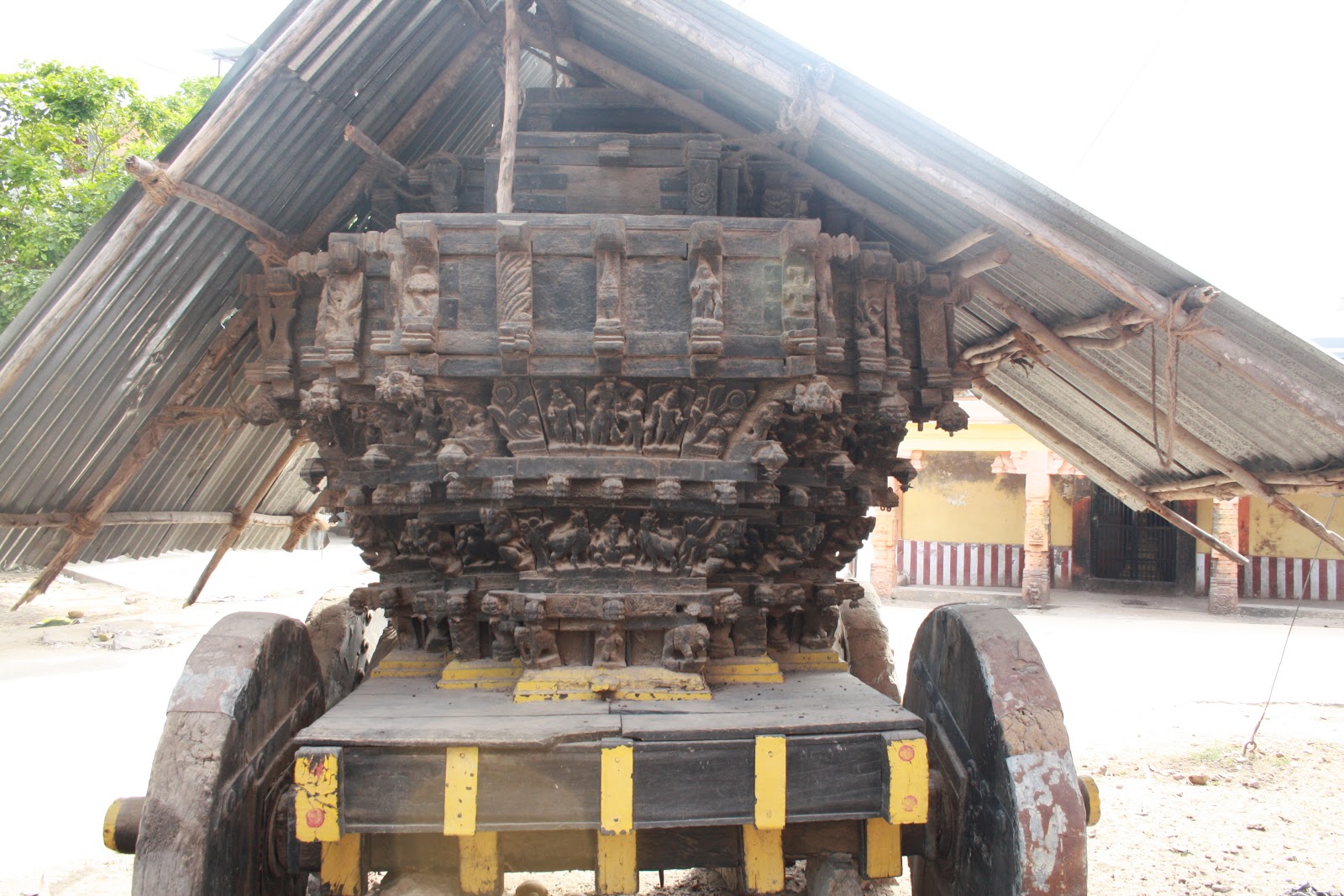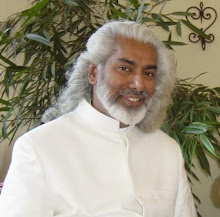The great temple chariots of South India are amazing structures for amazing events, architecturally and artistically. They are at the centre of the grand festival or utsava celebrated once a year. Each temple has its own tradition with respect to the calendar and also the number of days and the progression of the processions. But the chariot day is always the central feature and also the most spiritually and aesthetically inspiring.
 |
| Temple chariots in Chidambaram |
At the same time the ratha or ter, as the chariot is called in Sanskrit and Tamil, is quite mysterious. Structurally it is an upside-down pyramid on four wheels made of wood. On top of this pyramid is a small dais which is also a stepped pyramid, but right side up. For the occasion of the actual festival a temporary upper structure will be constructed of poles which will be covered by colourful cloth. Although every temple has its own specific details, generally these upper structures also have a pyramidal structure and shape.
The relief from Madurai which was posted by Ramjee Nagarajan depicts another interpretation of the same idea. Here the Cosmic Turtle carries the Nagas and the Elephants on whose backs Shiva and Parvati are depicted as Somaskanda or as Uma-Maheshvara. (I am not sure Skanda is present here in between his father and mother, a more detailed photo could clarify this).
 |
| With thanks to Ramjee Nagarajan |
Here Meru is carried on the back of the World Turtle. On the back of the turtle Nagas or cobras carry the next level, that of the Cosmic Elephants. On the back of the elephants rests the actual mountain, on top of which is a platform in the shape of an inverted lotus. The whole is crowned with the Formless-Form of Shiva, the Linga.
 |
| Meru the Cosmic Mountain |
That this is a depiction of ancient cosmological concepts can be understood from some of the ritual platforms we find in festival mandapas, for instance in Madurai itself. In the Thousand Pillar Hall the large stone Nataraja and Sivakamasundari are placed on a ritual platform shaped in the form of the Cosmic Turtle. The Cosmic Turtle carries on its back the Cosmic Nagas and Elephants, and the Dikpalas, the Lords of the Directions are positioned at their appropriate places. Atogether this forms the platform which is the stage of Shiva’s Cosmic Dance.
 |
| The Cosmic Turtle offering his back as the stage of Shiva's Cosmic Dance in Madurai |
.JPG) |
| Here the Cosmic Turtle carries Mount Meru in Thirukallukundram |
We again find the Cosmic Turtle carrying the whole universe on its back. Here the turtle is also depicted in human form, it seems. On its back nagas and elephants, and above these the whole cosmos of worlds with heavenly beings and deities. I don’t have a photo of this, but the tail and the feet of the turtle stick out at the back and the sides of the chariot.
We can conclude the ratha or ter of South Indian temple festivals is a representation of the Cosmic Meru, which is at the same time the world axis, the skambha. Both the Turtle and Meru itself are other forms of the divine. The size doesn’t seem to be as significant. Possibly bigger chariots were build for the larger temples, in the same way the gopura seems to have become higher over time.
I hope this clarification of the meaning and function of the ritual festival chariot will help us all to understand the significance of the ancient traditions better. And the next time I pull the chariot with the Nataraja in it I will realise all the more He is the embodiment of the whole cosmos. And the festival is its unfolding.
© 2012 Liesbeth Pankaja Bennink







No comments:
Post a Comment